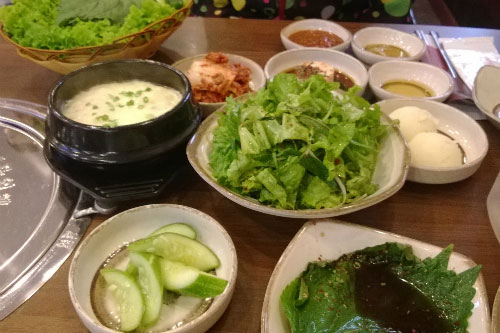Eating properly for liver patients
People with liver disease should eat sugar starch such as rice, vermicelli, vermicelli . more than usual, increasing protein from fish and milk.
>>> Misconceptions about eating with people with liver disease
The frequency of malnutrition in people with hepatitis accounts for 20-60%. The more severe liver failure is, the more severe the frequency and severity of malnutrition, especially in end-stage cirrhosis, leads to poor quality of life and reduced survival.
Common nutritional principles apply to most cirrhotic patients:
- Absolutely not drink alcohol.
- Should eat at least 4 meals a day, including 3 main meals and 1-2 side meals. Meals should be maintained around 8-9pm with snacks and milk.
- Eating sugar starch such as rice, vermicelli, vermicelli . more than normal to help liver reserve energy lost during the day (except in case of diabetes).
- The amount of protein (meat, fish, tofu) to eat during the day is similar to normal: 80-100g of fish (not counting bones), lean meat or tofu for each meal. Protein from fish and milk benefits people with liver disease because of easy digestion.
- No need to lose much fat, moderate intake because fat helps absorb a lot of vitamins (A, D, E, K) and participate in many body functions such as cell regeneration, immunity, and east blood . Only eat less in case of indigestion or jaundice, cholestasis. Eat fat from fish and from cooking oils.
- Limit foods high in cholesterol, animal fat (lard, beef, viscera or pig skin, chickens and ducks).
- Enhance minerals, fiber, vitamins from vegetables, tubers and fresh fruits: 100-120g of vegetables and tubers for each meal, fruits 200-300g a day.

Liver patients need to increase minerals, fiber, vitamins from fresh vegetables, tubers and fruits at every meal.(Photo: Le Phuong)
Particularly in case of ascites, it should be noted:
- Eat many small meals a day (4-6 meals).
- Eat enough nutrients like normal people. In case of cholestatic jaundice, reduce the amount of fat (oil, fat) in the diet.
- Regularly eat protein from fish or vegetable protein such as beans, tofu.
- Eat light (wedge less than one teaspoon of salt for the whole day) or limit seasoning to fish sauce, sweet powder or soup or seasoning. Do not add salt when eating fruit. Do not eat or eat very little canned foods, prepared foods and foods sold in stores because they are high in salt and monosodium glutamate.
- The amount of water per day depends on the degree of edema, ascites or kidney function, should be directed by a doctor.
In case of illness with diabetes, note:
- Eat less starch (rice, sticky rice, bread, noodles, potatoes .): Usually only eat one cup of rice for each meal or a small loaf of bread or a cup of pho .
- Eat less rubbed rice or brown rice to enhance fiber.
- Limit eating sweet fruit (durian, ripe mango, jackfruit, grape, sweet, banana .), instead can eat one of the types such as apples, pears, strawberries, sour plums . ( 100-120g once, eat twice a day).
- In case of difficulty controlling blood sugar, it is best to be consulted by nutrition experts.
In the case of drowsiness or coma:
- Patients must be treated in the hospital.
- Depending on the pathological condition, the doctor will provide appropriate nutrition, can put the tube through the nose to the stomach to feed or transmit nutrients directly into the blood.
- Misconceptions about eating with people with liver disease
- New hope for patients with liver failure
- Diet for patients with fatty liver
- 50% of liver cancer patients cannot be treated
- The key to preventing colon cancer attacks the liver
- Liver transplants for 2-year-old patients: Successful!
- Things to know when eating fish
- Eating habits that can make you not infected with fluke also have days of losing your liver
- 8 ways to reduce liver enzymes simply can be done
- Liver enzymes are high and how to reduce them without medication
- Fatty liver: Causes, symptoms and treatments
- Using the right amount of coffee can help protect the liver
 Green tea cleans teeth better than mouthwash?
Green tea cleans teeth better than mouthwash? Death kiss: This is why you should not let anyone kiss your baby's lips
Death kiss: This is why you should not let anyone kiss your baby's lips What is salmonellosis?
What is salmonellosis? Caution should be exercised when using aloe vera through eating and drinking
Caution should be exercised when using aloe vera through eating and drinking